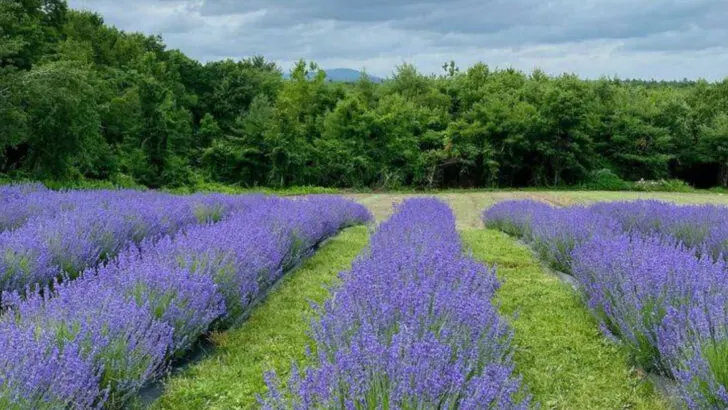Summer’s busy enough without adding fussy plants to the mix. Between work, travel plans, and the heat, it’s easy to skip watering or forget which flowers need deadheading. Still, it’s nice to come home to a bit of color, something cheerful that doesn’t wilt the minute you miss a day.
That’s where the low-maintenance champions come in. These are the kinds of plants that can handle a little neglect, bounce back from dry spells, and keep blooming without the drama. If your schedule is full but you still want your yard, balcony, or porch to feel alive, this list is for you.
Lavender
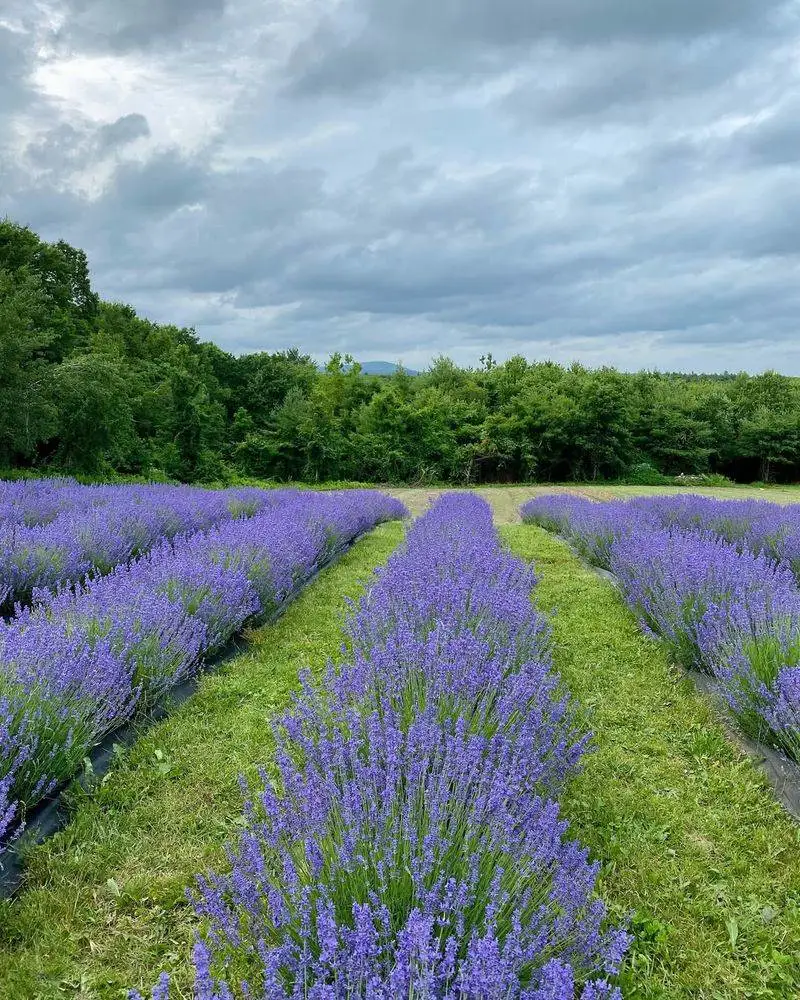
Lavender, with its soothing aroma, is perfect for those who appreciate tranquility. This hardy plant thrives in dry, sunny spots and requires little more than occasional watering. Its calming purple hues not only add charm but also attract pollinators like bees and butterflies.
Plant lavender in well-drained soil, and it will reward you with a beautiful display. With its Mediterranean origins, lavender brings a touch of the exotic to any garden. Plus, it’s drought-resistant, making it ideal for busy gardeners.
Fun fact: Ancient Romans used lavender in their baths for fragrance and relaxation.
Black-Eyed Susan
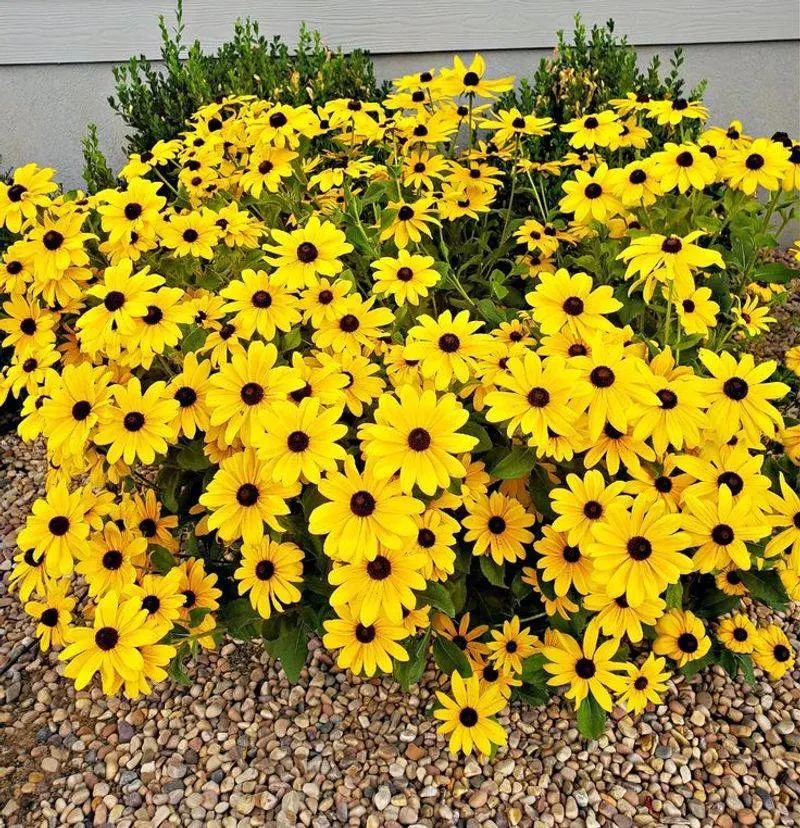
The cheerful Black-Eyed Susan stands out with its sunny yellow petals and dark centers. Known for its resilience, this plant can thrive in various soil conditions, from dry to moderately moist. It blooms from June to October, providing a long-lasting splash of color.
These flowers are not only visually appealing but also attract butterflies, enhancing your garden’s biodiversity. They’re easy to care for with minimal pruning needed.
Did you know? Black-Eyed Susans are often used as symbols of encouragement and motivation, perfect for inspiring any gardener.
Daylily
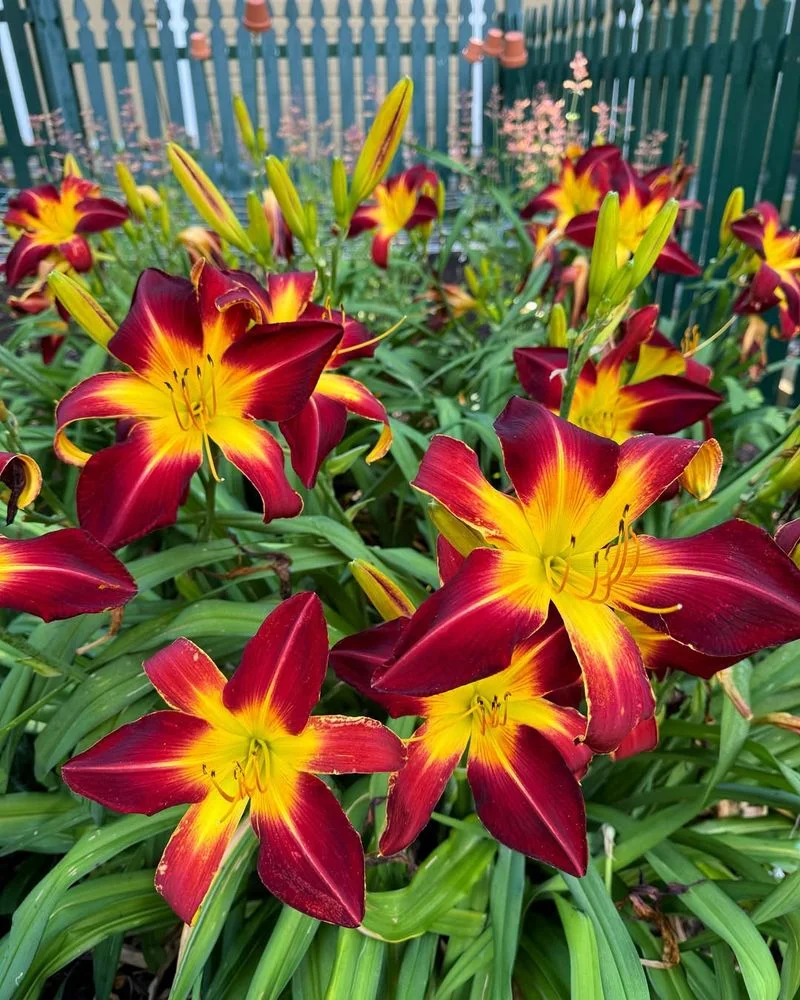
Daylilies are the epitome of effortless beauty, requiring little care once established. Their trumpet-shaped blooms come in a variety of colors, including orange, yellow, and red. These flowers flourish in full sun to partial shade, making them versatile additions to any garden.
They are exceptionally drought-tolerant and can grow in poor soil conditions. Each bloom lasts only a day, but the plant continues to produce new flowers throughout the season.
A fun tidbit: Despite their name, daylilies are not true lilies; they belong to the genus Hemerocallis.
Zinnia
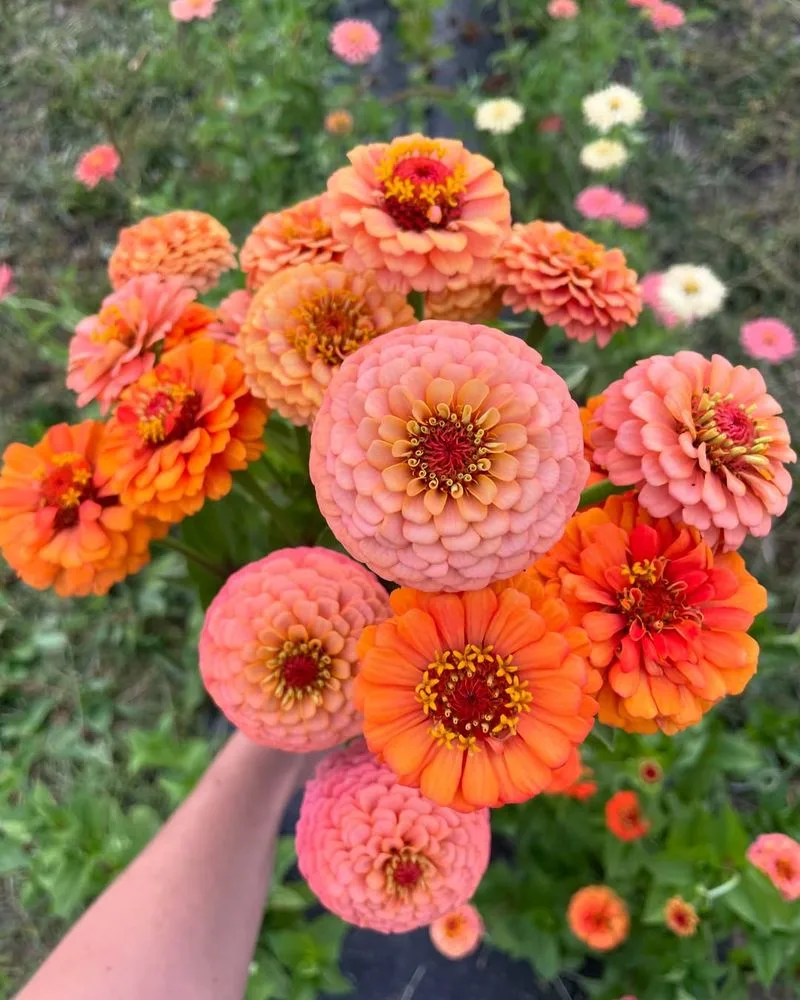
Zinnias are a favorite for those seeking low-maintenance, colorful blooms. Bursting in shades of red, pink, orange, and white, they brighten any space effortlessly. Plant them in full sun, and they will reward you with continuous flowers all summer long.
These robust plants can handle heat and drought well, making them ideal for summer gardens. They’re also excellent for attracting butterflies, adding a lively atmosphere.
Interesting fact: Zinnias were one of the first flowers to grow in space, aboard the International Space Station in 2016.
Coneflower
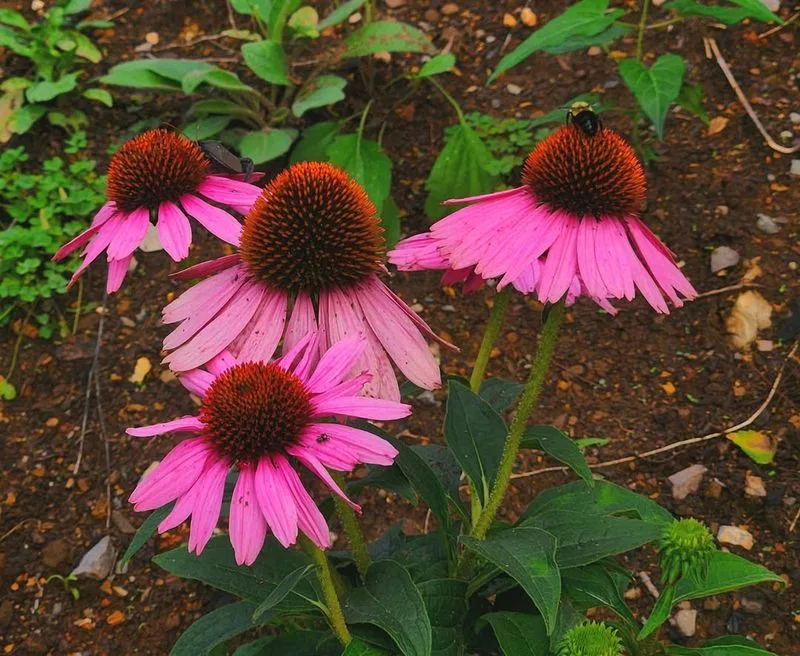
Coneflowers, with their distinctive drooping petals and spiky centers, are a staple in summer gardens. These perennials are loved for their hardiness and ability to thrive in various climates. They bloom from midsummer to fall, providing extended color.
Plant coneflowers in well-drained soil and a sunny spot, and enjoy their resilience. They’re drought-resistant and attract pollinators, making them both eco-friendly and eye-catching.
Did you know? Coneflowers, or Echinacea, are also popular in herbal teas, believed to boost the immune system.
Marigold
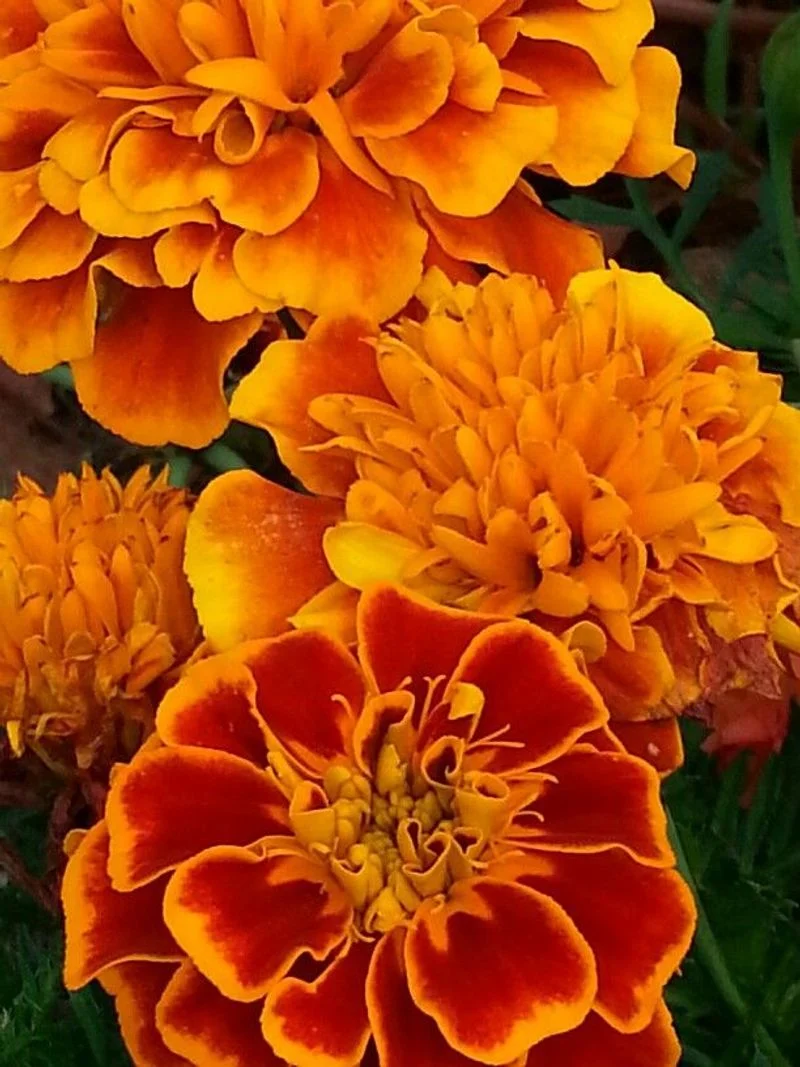
Marigolds bring a burst of sunshine to any garden with their vibrant orange and yellow flowers. Known for their ease of care, they thrive in sunny locations and are quite drought-tolerant. These annuals are perfect for those who prefer minimal gardening effort.
Marigolds are great companion plants, known to repel pests naturally, benefiting other plants nearby. Their long blooming period extends from spring to fall, adding continuous color.
Fun fact: Marigolds are often used in cultural festivals worldwide, symbolizing warmth and creativity.
Hosta
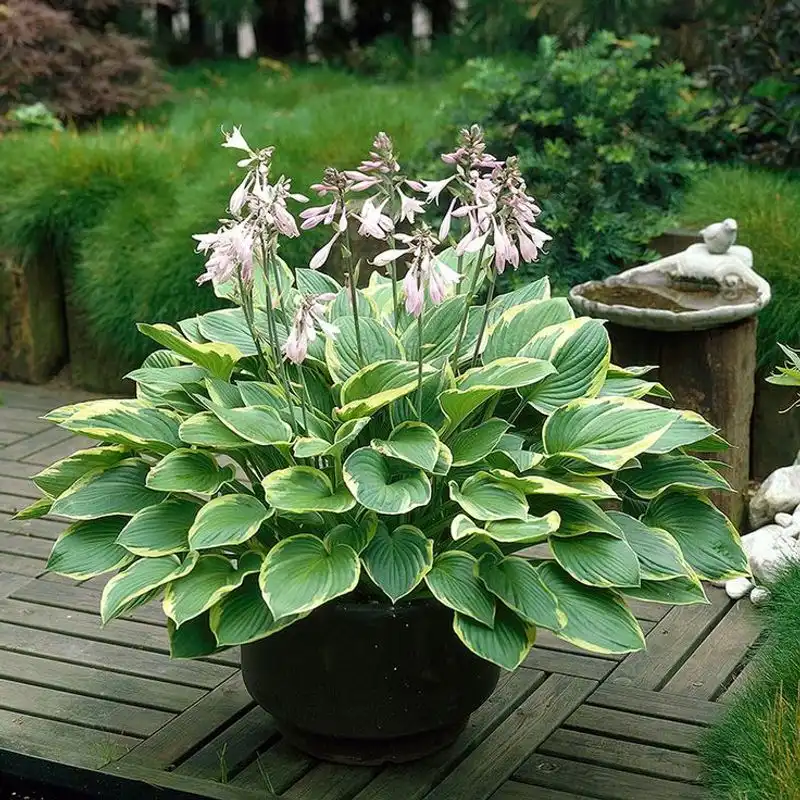
Hostas are renowned for their lush foliage and ability to thrive in shaded areas. These perennial plants are perfect for filling garden gaps where sun-loving species might struggle. With their large, textured leaves, hostas offer visual interest without the need for flowers.
They require minimal maintenance, making them ideal for busy gardeners. Water them regularly, and they’ll flourish in rich soil.
Did you know? Hostas are native to Northeast Asia and have been cultivated for centuries for their ornamental leaves.
Lantana
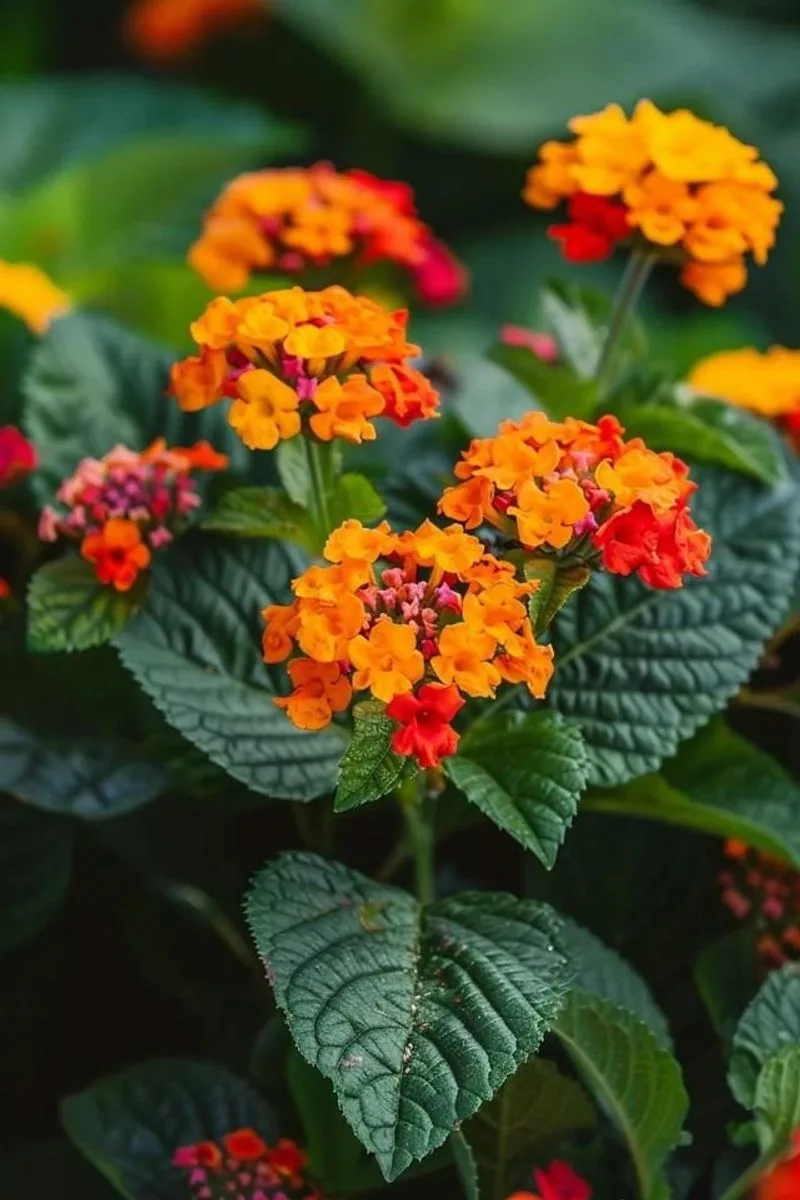
Lantanas are a vibrant addition to any garden, offering clusters of multi-colored flowers. These hardy shrubs excel in sunny spots and require little water, thriving in hot climates. They’re perfect for adding a splash of color to borders or containers.
Lantanas are drought-resistant and attract a variety of pollinators, including butterflies and hummingbirds. Their continuous blooming from spring to fall ensures ongoing beauty.
Fun fact: Lantanas are native to tropical regions of the Americas and Africa, known for their adaptability and resilience.
Sedum
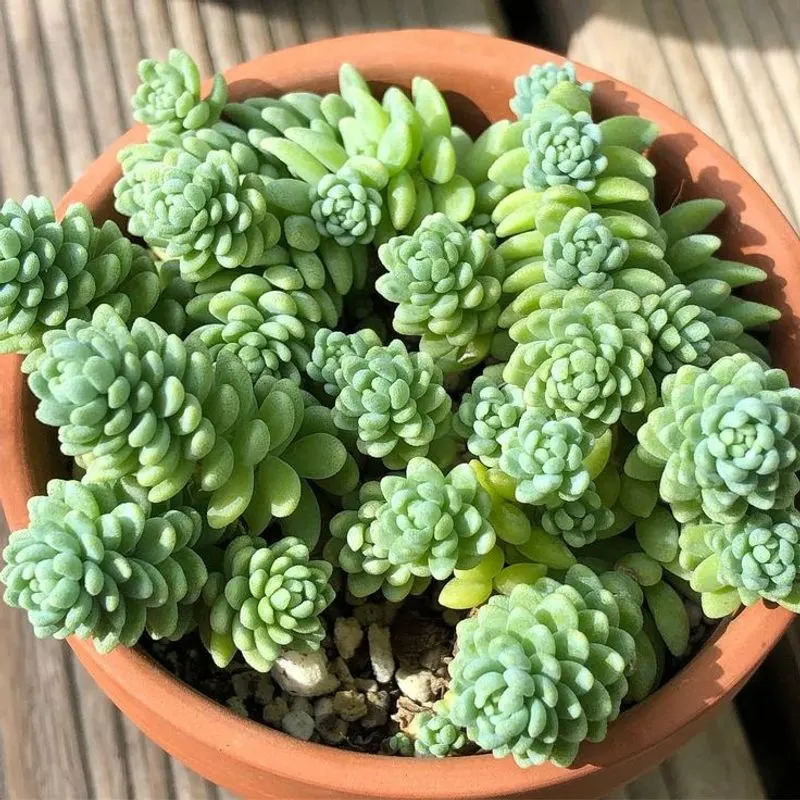
Sedums, also known as stonecrops, are perfect for those seeking low-maintenance, drought-tolerant plants. With their fleshy leaves and star-shaped flowers, they add texture and color to any garden. These perennials thrive in well-drained soil and full sun.
Sedums are ideal for rock gardens or as ground cover, requiring minimal care once established. They are also resistant to pests and diseases.
Did you know? The name ‘sedum’ comes from the Latin word ‘sedeo,’ meaning to sit, as many species are ground-hugging.
Petunia
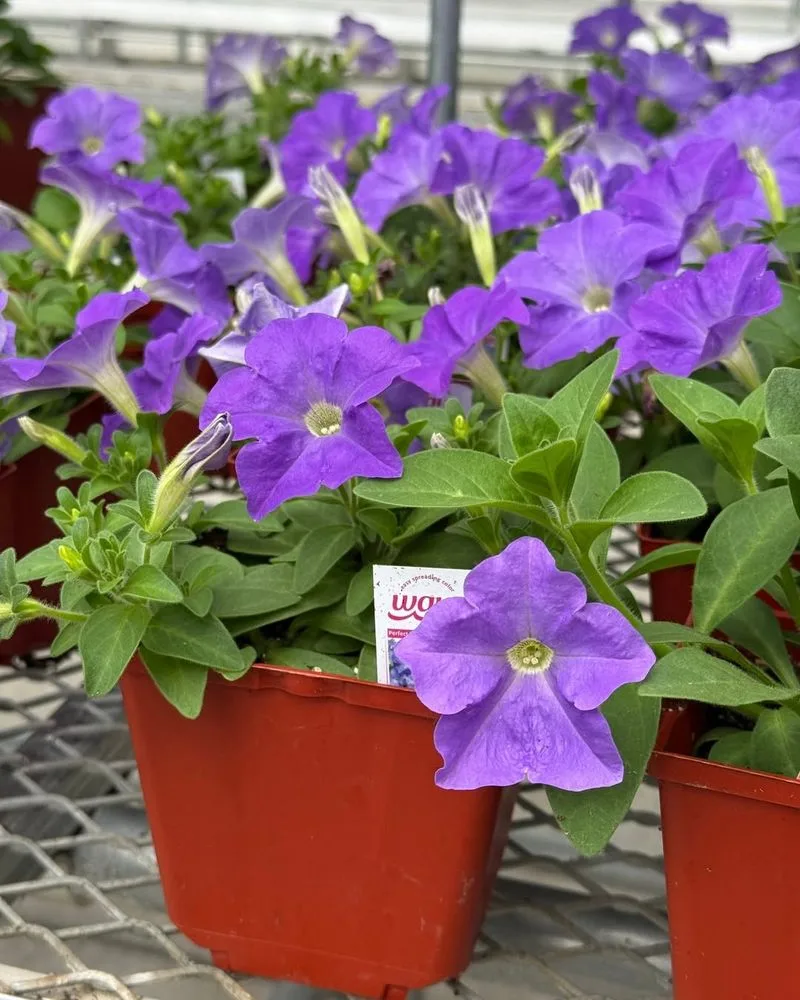
Petunias offer a cascade of colors, perfect for hanging baskets or garden beds. These annuals are beloved for their wide range of hues, including pink, purple, red, and white. They thrive in sunny locations and require regular watering to maintain their vibrant display.
Easy to grow, petunias bloom throughout the summer, adding continuous charm to your space. They attract hummingbirds, enhancing your garden’s liveliness.
Fun fact: Petunias are native to South America and were named after the French word for tobacco, ‘petun,’ due to their similar family.
Salvia
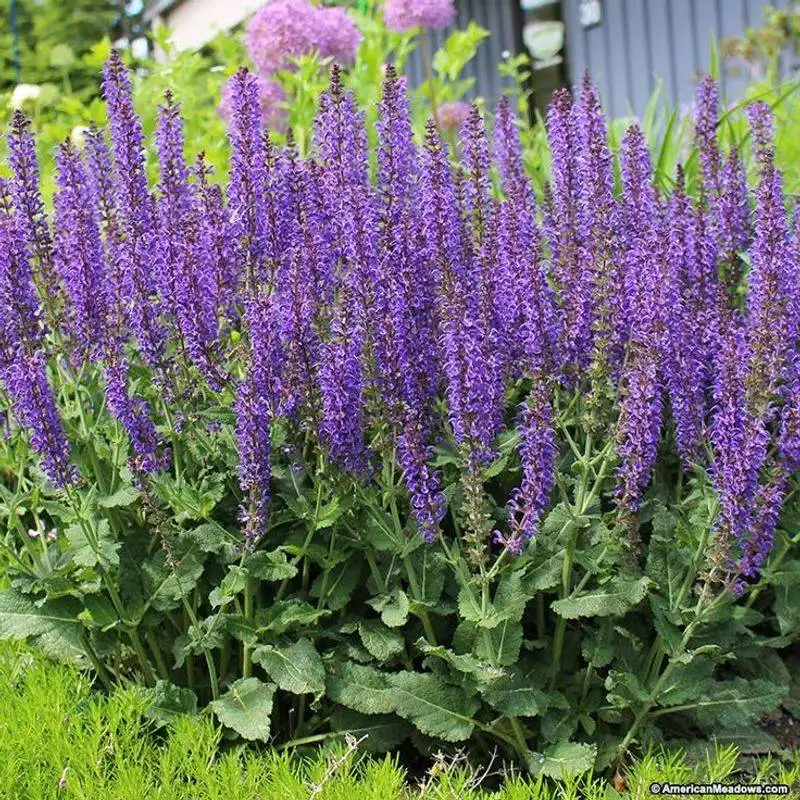
Salvia, with its striking blue and purple spikes, adds an elegant touch to any garden. These perennials are known for their low-maintenance nature, flourishing in sunny locations with well-draining soil. They’re drought-tolerant and bloom from late spring to fall.
Salvias attract pollinators, including bees and hummingbirds, making them environmentally friendly choices. Their aromatic foliage also adds a sensory delight to your garden.
Interesting tidbit: Salvia is part of the mint family, and its name comes from the Latin word ‘salvare,’ meaning to heal.
Begonia
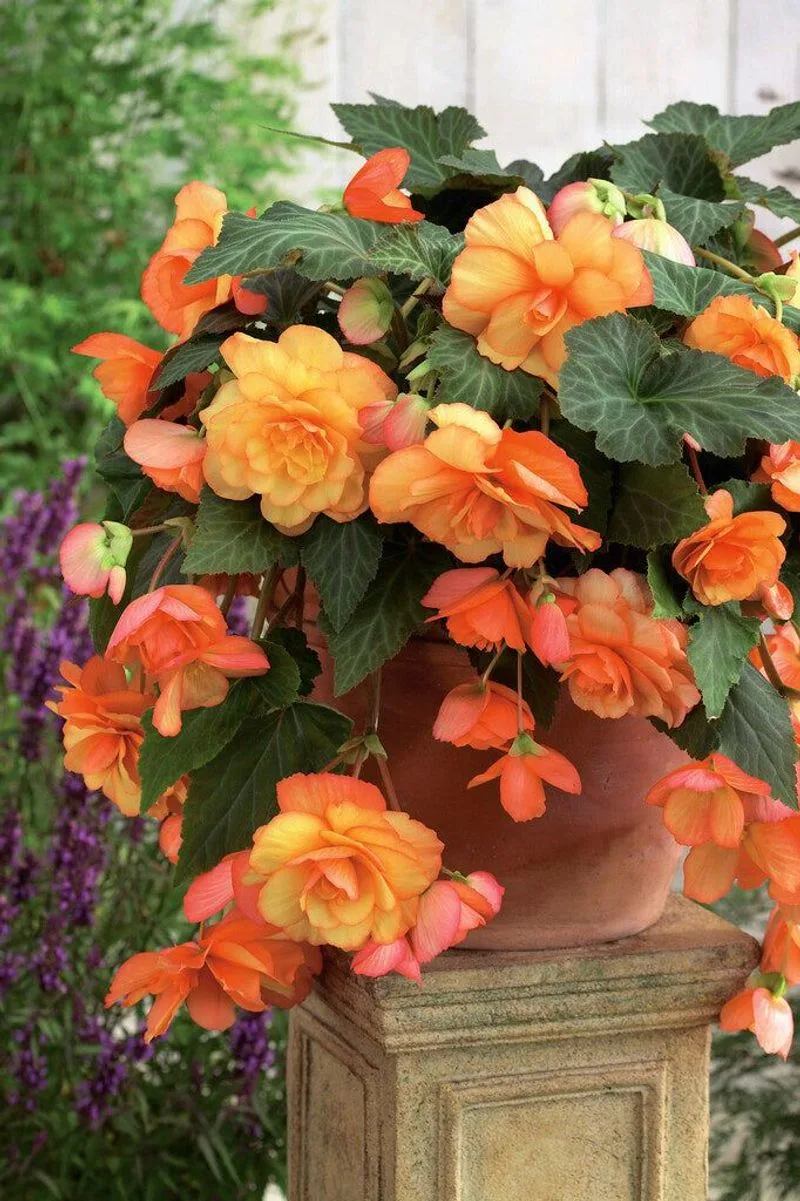
With their lush leaves and vibrant blooms, begonias bring a touch of elegance to any setting. These versatile plants are perfect for shaded areas, where their colors can brighten up a dull space. They require regular watering but are otherwise low-maintenance.
Begonias can be grown in pots or garden beds, providing flexibility in design. Their long blooming season lasts from spring to frost, ensuring ongoing beauty.
Did you know? Begonias are named after Michel Bégon, a French governor and plant enthusiast who contributed to their discovery.
Coreopsis
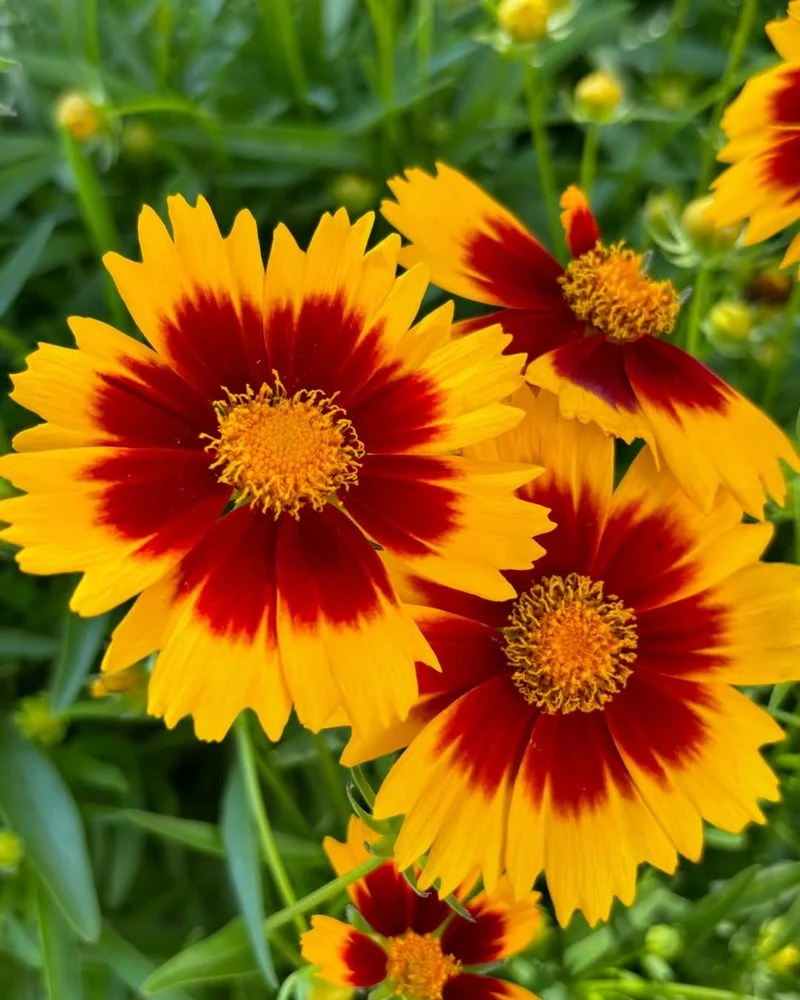
Coreopsis, known for its cheerful yellow flowers, is perfect for adding a sunny disposition to any garden. These perennials are easy to grow, thriving in full sun and well-drained soil. They’re drought-tolerant once established, needing minimal care.
Coreopsis blooms from early summer to fall, providing continuous color. They attract butterflies and bees, enhancing your garden’s ecosystem.
Fun fact: Coreopsis is the state wildflower of Florida, symbolizing cheerfulness and love. Its name is derived from the Greek words ‘koris’ (bug) and ‘opsis’ (view), referring to the shape of its seeds.
Geranium
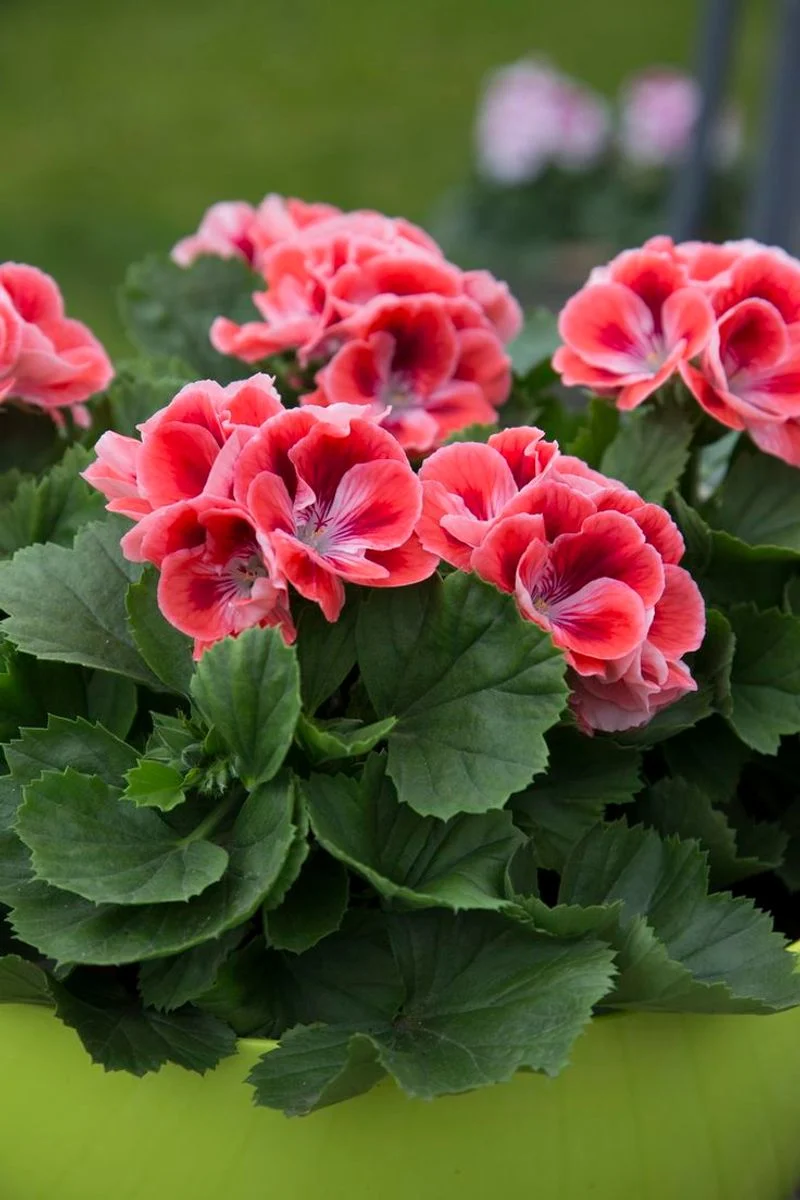
Geraniums are a classic choice for summer gardens, known for their vivid red, pink, or white blooms. These hardy plants flourish in sunny spots and require well-drained soil. They’re perfect for containers, window boxes, or garden beds.
Geraniums are drought-tolerant and easy to care for, making them ideal for busy gardeners. Their long blooming season ensures continuous color and charm.
Did you know? Geraniums have been used in perfumery for centuries, prized for their aromatic leaves. They’re also associated with positive energy and protection.
Snapdragon
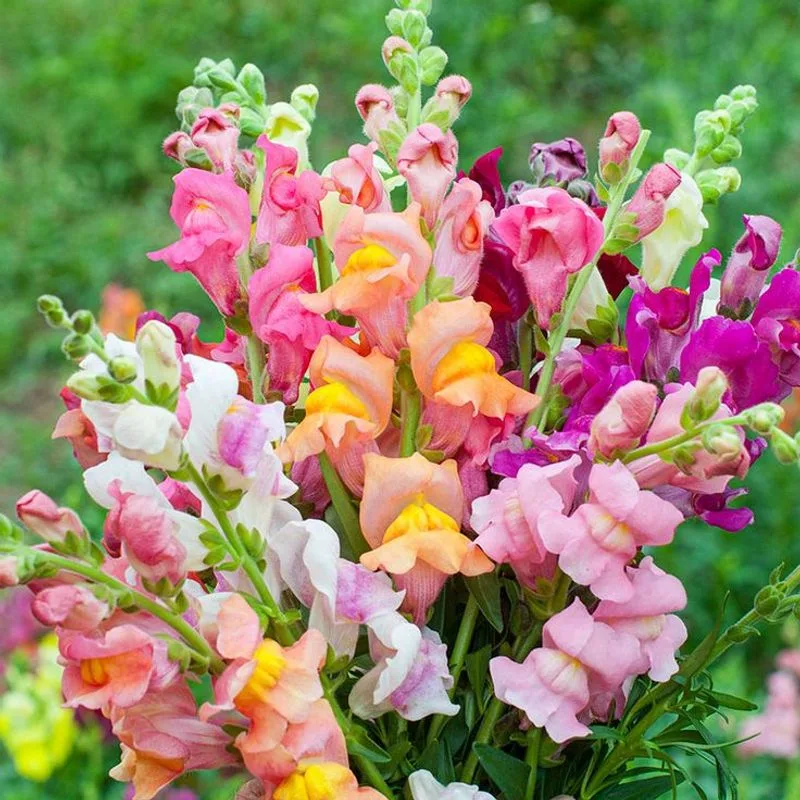
Snapdragons, with their distinctive dragon-like blooms, add a playful touch to any garden. These annuals come in a variety of colors, including pink, yellow, and red. They thrive in sunny areas and require regular watering for best performance.
Snapdragons are perfect for creating vertical interest with their tall flower spikes. They bloom from spring to fall, providing continuous beauty.
Fun fact: The name ‘snapdragon’ comes from the resemblance of the flower to a dragon’s mouth, which can be opened and closed by pinching the sides.
Verbena
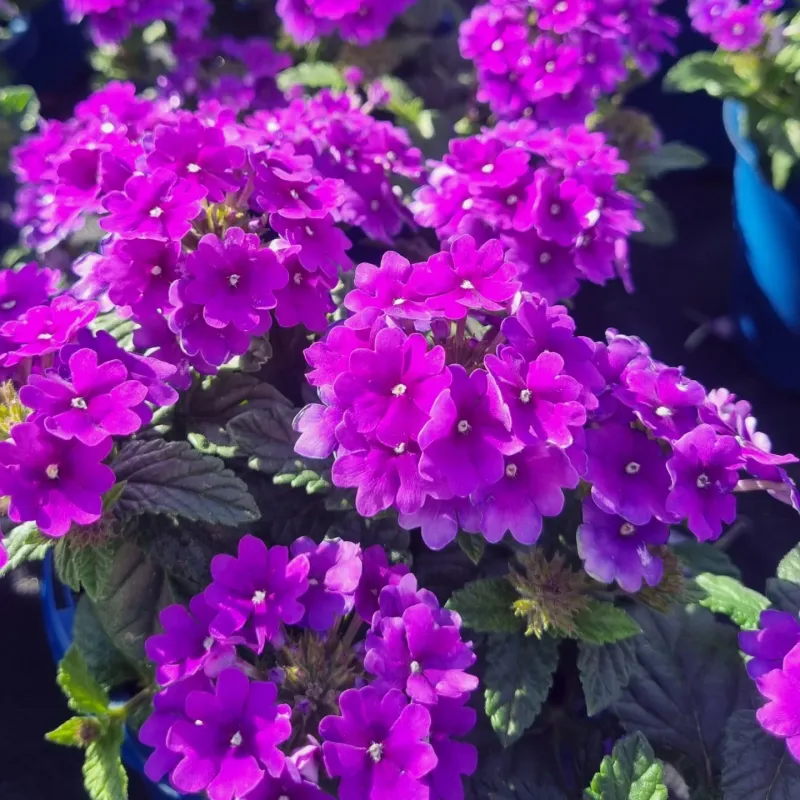
With its vibrant clusters of purple flowers, verbena is a summer favorite. This hardy plant thrives in sunny locations and is highly drought-tolerant, perfect for low-maintenance gardening. It attracts butterflies, adding movement and life to your garden.
Verbena blooms from spring to fall, providing long-lasting color. It’s ideal for borders, containers, or hanging baskets, offering versatility in design.
Did you know? Verbena has been associated with divine and supernatural forces since ancient times, often used in rituals and healing practices.
Calibrachoa
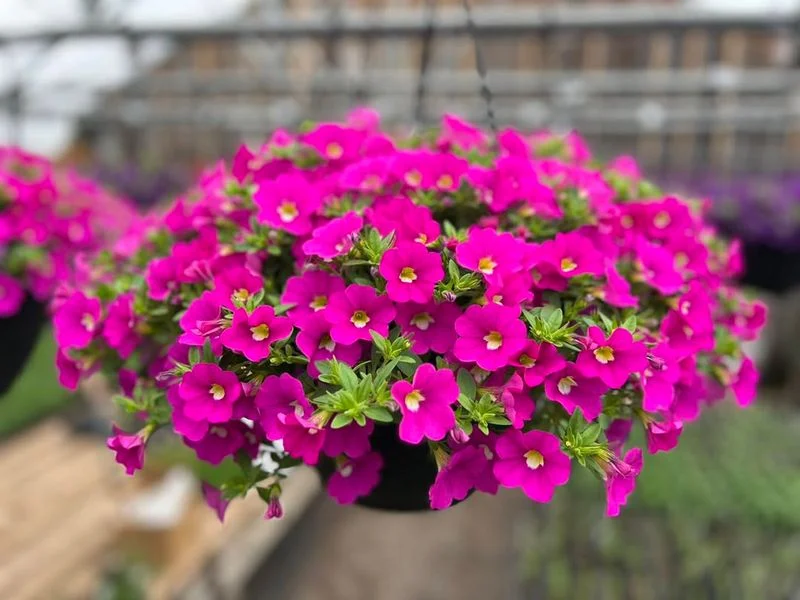
Often called ‘million bells,’ calibrachoa offers an abundance of small, petunia-like blooms. These annuals are perfect for hanging baskets, overflowing with color in shades of pink, purple, yellow, and orange. They thrive in full sun and need regular watering.
Calibrachoa is known for its trailing habit, making it ideal for cascading effects. Despite their delicate appearance, they’re surprisingly resilient.
Fun fact: Calibrachoa was only recognized as a separate genus from petunias in the 1990s, thanks to advances in plant genetics.
Impatiens
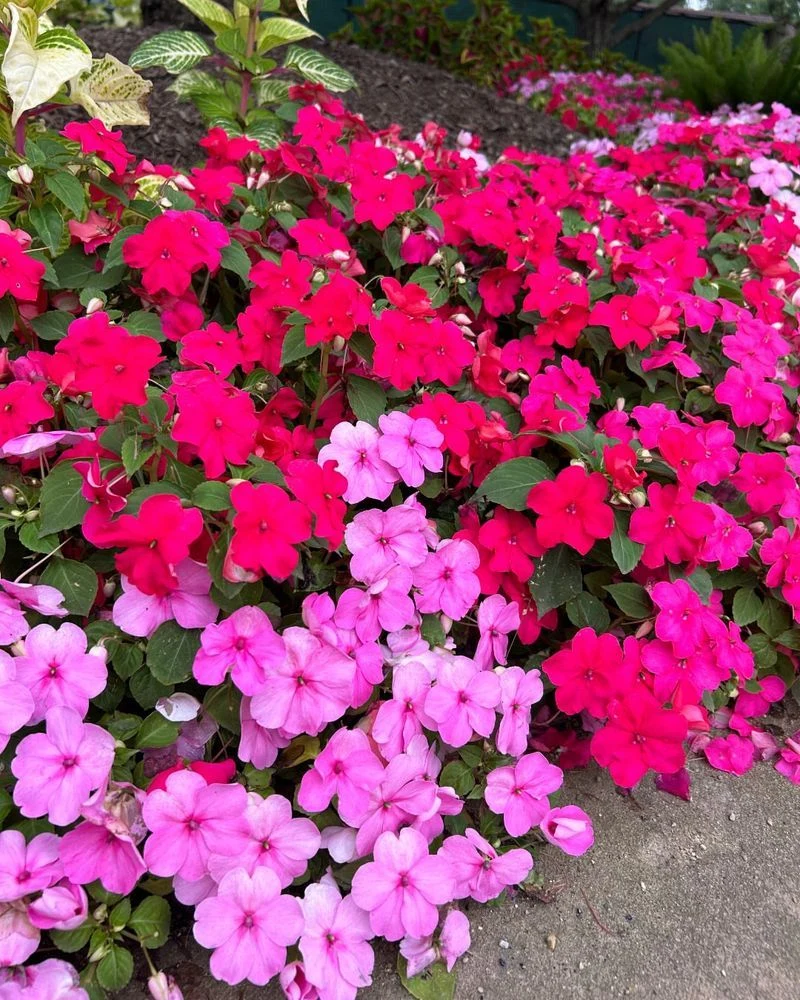
Impatiens are a go-to choice for shaded gardens, with their vibrant blooms bringing life to dim areas. These annuals flourish in moist, well-drained soil and need regular watering to stay healthy. Available in a spectrum of colors, they add variety to any garden.
Perfect for borders and containers, impatiens bloom from spring to frost, offering extended beauty. They’re ideal for gardeners seeking lush color with minimal effort.
Did you know? Impatiens were named for their seed pods, which burst upon touching, scattering seeds widely.
Nicotiana
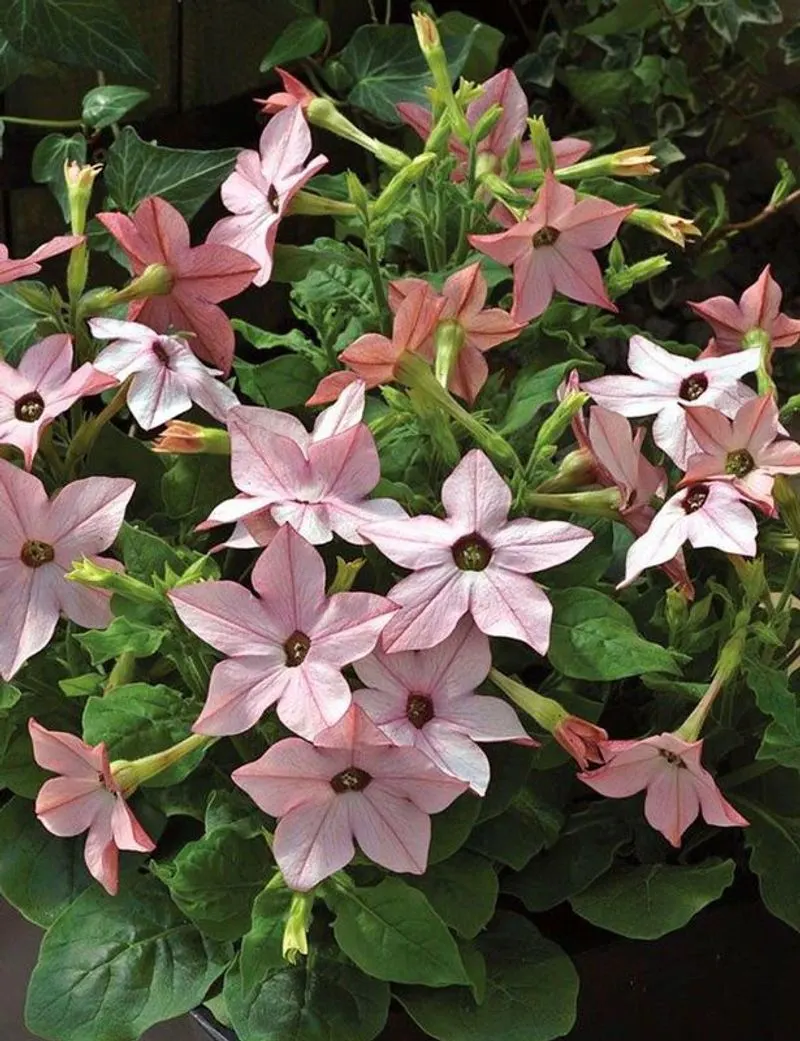
Nicotiana, with its elegant and fragrant trumpet-shaped flowers, transforms any garden into a serene retreat. Known for blooming in vibrant shades of white, pink, and red, it’s a delightful choice for those seeking low-maintenance beauty.
These plants thrive in well-drained soil and love basking in the sun. They’re perfect for busy gardeners who want maximum color with minimal effort. Plant them in your garden for a splash of elegance and to attract hummingbirds.
Interestingly, Nicotiana is related to tobacco, but don’t worry – they’re purely ornamental and safe for your garden!

